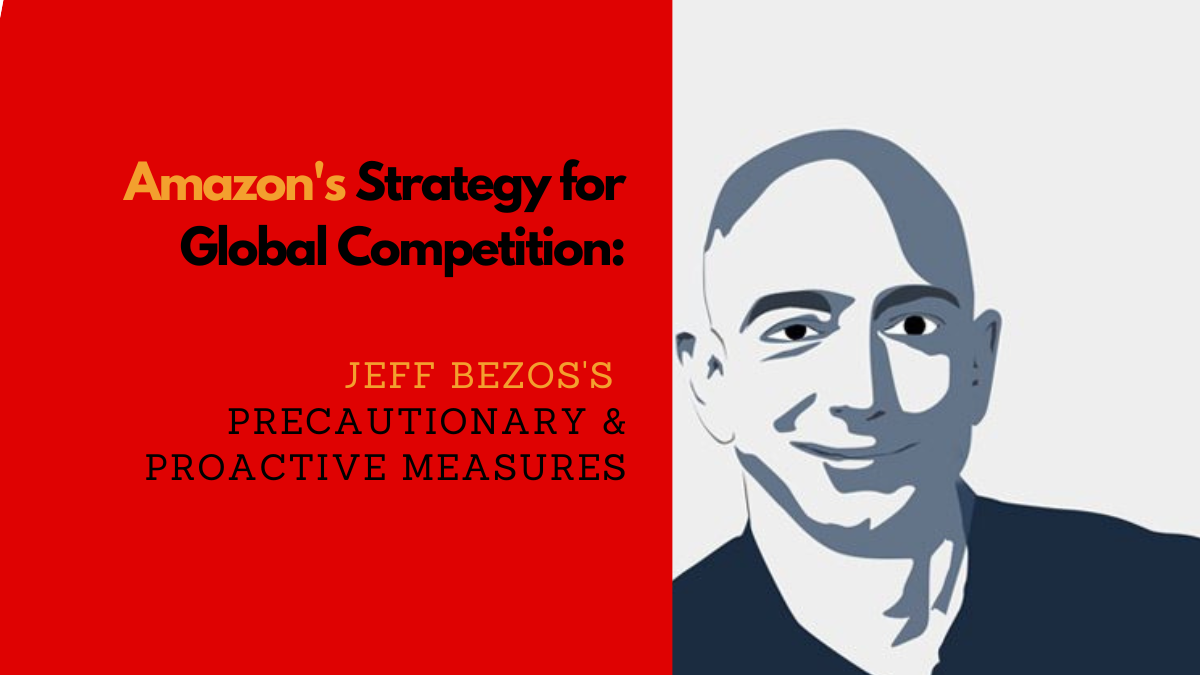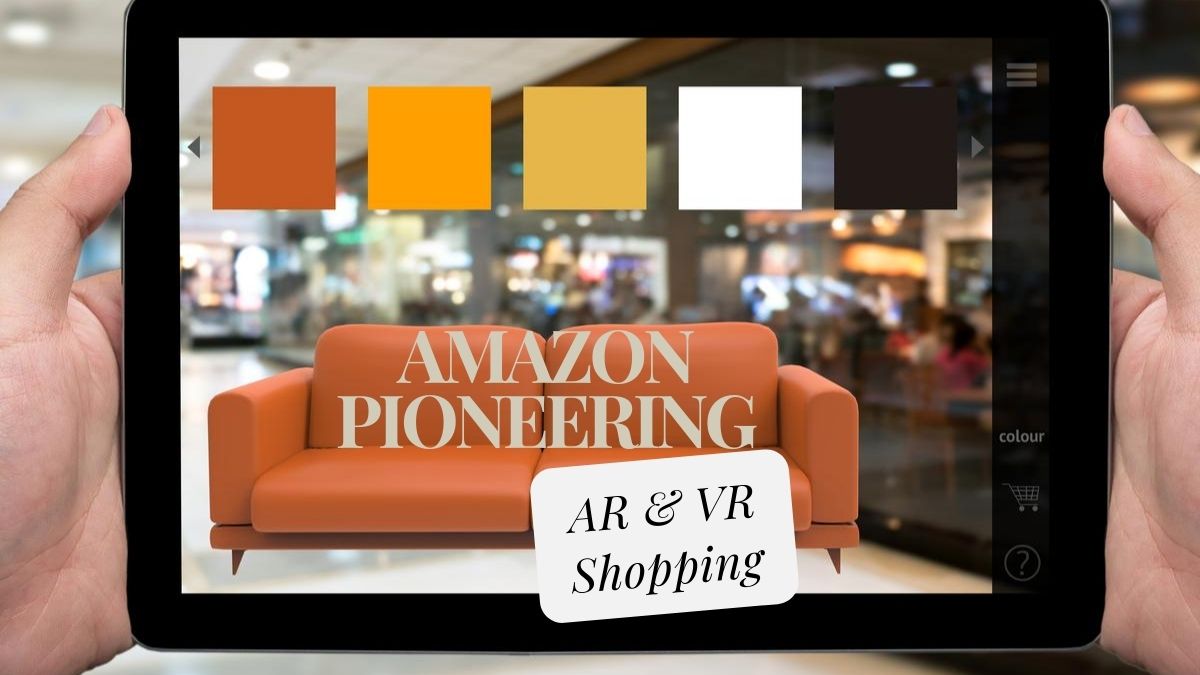Amazon, founded by Jeff Bezos in 1994, has transformed from an online bookstore into a global e-commerce giant. Its success can be attributed to Bezos’s visionary leadership, innovative strategies, and relentless focus on customer satisfaction. As the company faces increasing global competition, it has implemented various precautionary measures to maintain its market dominance. However, to sustain its competitive edge, Amazon must also adopt proactive measures for the future. This article explores the strategies employed by Jeff Bezos to navigate global competition and proposes future measures to ensure Amazon’s continued success.
Precautionary Measures Taken by Jeff Bezos
1. Customer-Centric Approach
One of Bezos’s core philosophies is the relentless focus on customer satisfaction. He believes that by prioritizing the needs and preferences of customers, Amazon can create a loyal customer base and sustain long-term growth.
a. Personalization and Recommendations
Amazon’s sophisticated algorithms analyze customer behavior and preferences to provide personalized recommendations. This enhances the shopping experience and increases the likelihood of repeat purchases.
b. Efficient Customer Service
Amazon’s customer service is renowned for its efficiency and responsiveness. The company offers multiple channels for customer support, including chat, email, and phone. It also has a hassle-free return policy, which builds trust and encourages customers to shop confidently.
c. Continuous Improvement
Jeff Bezos emphasizes the importance of continuously improving the customer experience. Amazon regularly seeks feedback from customers and uses it to enhance its products and services.
2. Technological Innovation
Bezos has always recognized the importance of leveraging technology to stay ahead of the competition. Under his leadership, Amazon has made significant investments in technology and innovation.
a. Cloud Computing (Amazon Web Services)
Amazon Web Services (AWS) is one of the most successful ventures initiated under Bezos’s leadership. AWS provides cloud computing services to businesses globally, contributing significantly to Amazon’s revenue. By diversifying its business model, Amazon has reduced its dependence on e-commerce alone.
b. Artificial Intelligence and Machine Learning
Amazon uses AI and machine learning across various aspects of its business. This includes personalized recommendations, inventory management, and supply chain optimization. AI-driven technologies have enabled Amazon to enhance operational efficiency and deliver a superior customer experience.
c. Automation and Robotics
Amazon has invested heavily in automation and robotics to streamline its logistics and warehouse operations. The use of robots in fulfillment centers has increased efficiency, reduced labor costs, and minimized errors.
3. Expansive Logistics Network
Jeff Bezos understood that a robust logistics network is crucial for an e-commerce company. Amazon’s extensive logistics infrastructure ensures fast and reliable delivery, which is a key competitive advantage.
a. Fulfillment Centers
Amazon operates numerous fulfillment centers worldwide, strategically located to optimize delivery times and costs. These centers are equipped with advanced technology to manage inventory and fulfill orders efficiently.
b. Last-Mile Delivery
Amazon has developed its last-mile delivery capabilities to ensure timely delivery to customers’ doorsteps. The company employs a combination of its delivery fleet, third-party carriers, and innovative solutions like Amazon Flex, which utilizes independent contractors for deliveries.
c. Prime Membership
Amazon Prime offers expedited shipping, exclusive deals, and access to streaming services. Prime members are more likely to shop frequently on Amazon, contributing to increased sales and customer loyalty.
4. Diversification and Expansion
Jeff Bezos strategically diversified Amazon’s business to reduce risks and tap into new revenue streams. This diversification has strengthened Amazon’s position in the global market.
a. Amazon Marketplace
The Amazon Marketplace allows third-party sellers to list their products on Amazon’s platform. This has expanded the product selection available to customers and increased Amazon’s revenue through commissions and fees.
b. Acquisition Strategy
Amazon has acquired several companies to enhance its capabilities and enter new markets. Notable acquisitions include Whole Foods Market, which marked Amazon’s entry into the grocery sector, and Zappos, an online shoe and clothing retailer.
c. International Expansion
Amazon has expanded its operations to numerous countries, including India, Australia, and various European markets. This global presence allows Amazon to tap into diverse customer bases and mitigate risks associated with relying on a single market.
Proactive Measures for Future Success
While Bezos’s strategies have positioned Amazon as a dominant player, the company must continue to evolve and adapt to future challenges. Here are several proactive measures Amazon should consider to maintain its competitive edge.
1. Sustainable Practices and Environmental Responsibility
As environmental concerns become increasingly important to consumers and regulators, Amazon must prioritize sustainability to build a responsible and resilient business.
a. Carbon Neutrality and Renewable Energy
Amazon has committed to achieving net-zero carbon emissions by 2040 as part of The Climate Pledge. The company should continue to invest in renewable energy sources, such as solar and wind, to power its operations and reduce its carbon footprint.
b. Sustainable Packaging
Amazon should focus on minimizing packaging waste by using recyclable and biodegradable materials. Implementing packaging optimization algorithms can reduce excess packaging and lower shipping costs.
c. Supply Chain Transparency
Consumers are increasingly interested in the ethical sourcing of products. Amazon should enhance supply chain transparency by working with suppliers who adhere to sustainable and ethical practices. Providing customers with information about the origins of products can build trust and loyalty.
2. Innovation and Research & Development
Continued investment in innovation and research & development (R&D) is crucial for Amazon to stay ahead of technological advancements and market trends.
a. Advanced AI and Machine Learning Applications
Amazon should further develop AI and machine learning capabilities to enhance customer personalization, optimize inventory management, and improve logistics efficiency. These technologies can also be applied to emerging fields like natural language processing and computer vision.
b. Quantum Computing
Quantum computing has the potential to revolutionize data processing and complex problem-solving. Amazon should invest in quantum computing research to explore its applications in e-commerce, logistics, and cybersecurity.
c. Internet of Things (IoT)
IoT can provide real-time data on inventory, logistics, and customer behavior. Amazon should continue to integrate IoT technologies into its operations to improve efficiency, reduce costs, and enhance the customer experience.
3. Expansion into Emerging Markets
Emerging markets offer significant growth opportunities for Amazon. To succeed in these markets, Amazon must understand local consumer behavior, navigate regulatory environments, and build reliable infrastructure.
a. Local Partnerships
Forming partnerships with local businesses and suppliers can help Amazon navigate cultural and regulatory challenges in emerging markets. These partnerships can also enhance Amazon’s product offerings and delivery capabilities.
b. Customization for Local Preferences
Amazon should tailor its product selection, marketing strategies, and user interfaces to meet the preferences of local consumers. Understanding cultural nuances and preferences is crucial for building a strong customer base in new markets.
c. Infrastructure Development
Investing in logistics and fulfillment infrastructure in emerging markets is essential for ensuring timely and reliable delivery. Amazon should explore innovative solutions like drone deliveries and mobile fulfillment centers to overcome logistical challenges.
4. Enhanced Customer Experience
Maintaining a superior customer experience is vital for retaining customers and attracting new ones. Amazon should focus on enhancing various aspects of the customer journey.
a. Seamless Omnichannel Experience
Integrating online and offline shopping experiences can provide customers with greater convenience and flexibility. Amazon should invest in technologies that enable seamless transitions between online browsing, in-store shopping, and home delivery.
b. Virtual and Augmented Reality
Virtual and augmented reality technologies can enhance the online shopping experience by allowing customers to visualize products in real-time. Amazon should explore these technologies for product demonstrations, virtual try-ons, and immersive shopping experiences.
c. AI-Powered Customer Support
AI-powered chatbots and virtual assistants can provide instant and accurate customer support. Amazon should continue to enhance its AI customer support capabilities to resolve issues quickly and efficiently.
5. Strategic Acquisitions and Partnerships
Acquisitions and partnerships can help Amazon expand its capabilities, enter new markets, and stay ahead of competitors.
a. Acquiring Innovative Startups
Acquiring startups with cutting-edge technologies and innovative business models can enhance Amazon’s capabilities. These acquisitions can also provide access to new customer segments and markets.
b. Partnerships with Tech Companies
Collaborating with technology companies can accelerate the development and deployment of new solutions. Partnerships with companies specializing in AI, IoT, and cybersecurity can enhance Amazon’s technological capabilities.
c. Joint Ventures with Local Retailers
In emerging markets, joint ventures with local retailers can provide Amazon with valuable market insights and access to established customer bases. These partnerships can also help Amazon navigate regulatory challenges and cultural nuances.
Conclusion
Jeff Bezos’s visionary leadership and innovative strategies have propelled Amazon to the forefront of the global e-commerce industry. By prioritizing customer satisfaction, leveraging technology, building a robust logistics network, and diversifying its business, Amazon has navigated global competition effectively. However, to sustain its competitive edge in the future, Amazon must adopt proactive measures. Prioritizing sustainability, investing in innovation, expanding into emerging markets, enhancing customer experience, and pursuing strategic acquisitions and partnerships are essential steps for Amazon to thrive in the ever-evolving global market. By addressing these challenges head-on and continuously evolving, Amazon can maintain its position as a global leader in e-commerce and beyond.



